5 hours 40 minutes. 7:40 a.m. to 1:20 p.m. I have no idea what the mileage was. The signage for the trail is generally quite good but provides no distances. It would be easy to add mileage or kilometers to the signs, but alas that has not been done. I could have used my phone to track mileage, but I didn’t want to use up my battery and not have enough power to take photos.
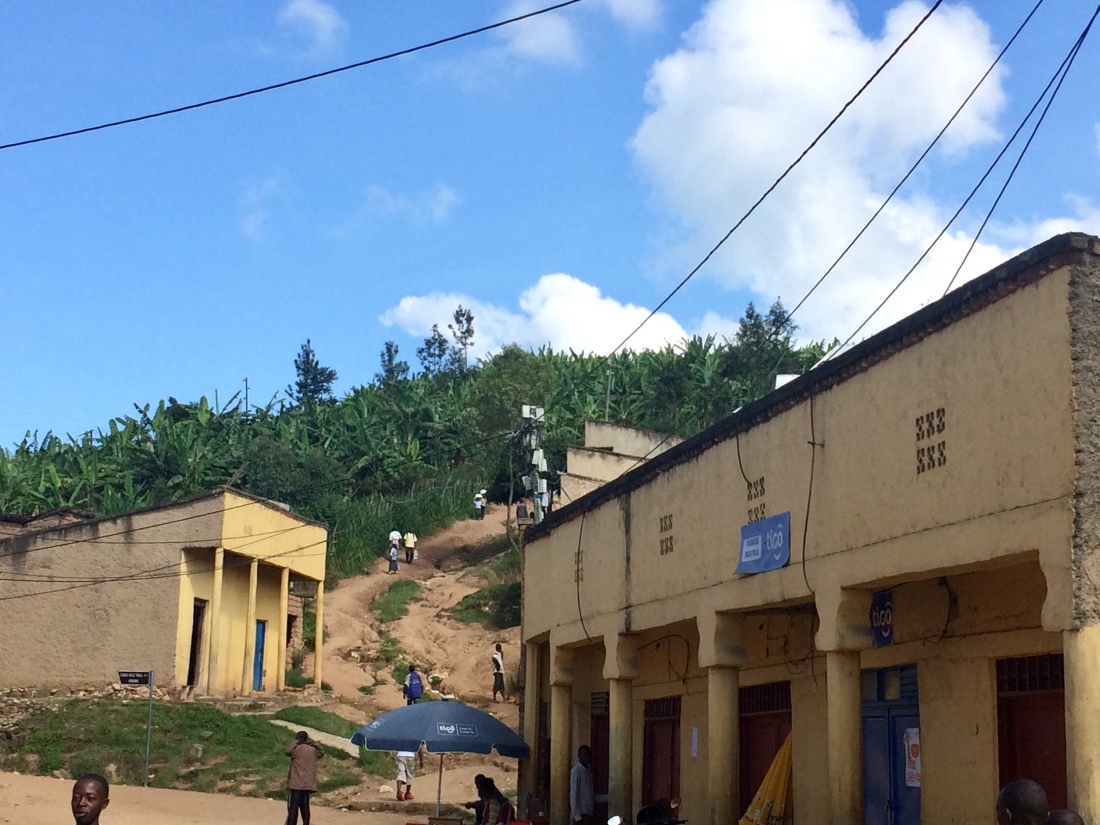
The shortcut trail from our guesthouse in Kinunu was single-track with beautiful views of the lake and quite hilly with lots of ups and downs. We encountered lots of kids, all asking for money (amafaranga) or agacupa (pronounced aga-chupa, meaning a small bottle, referring to our water bottles, which we were glad to give away when empty).
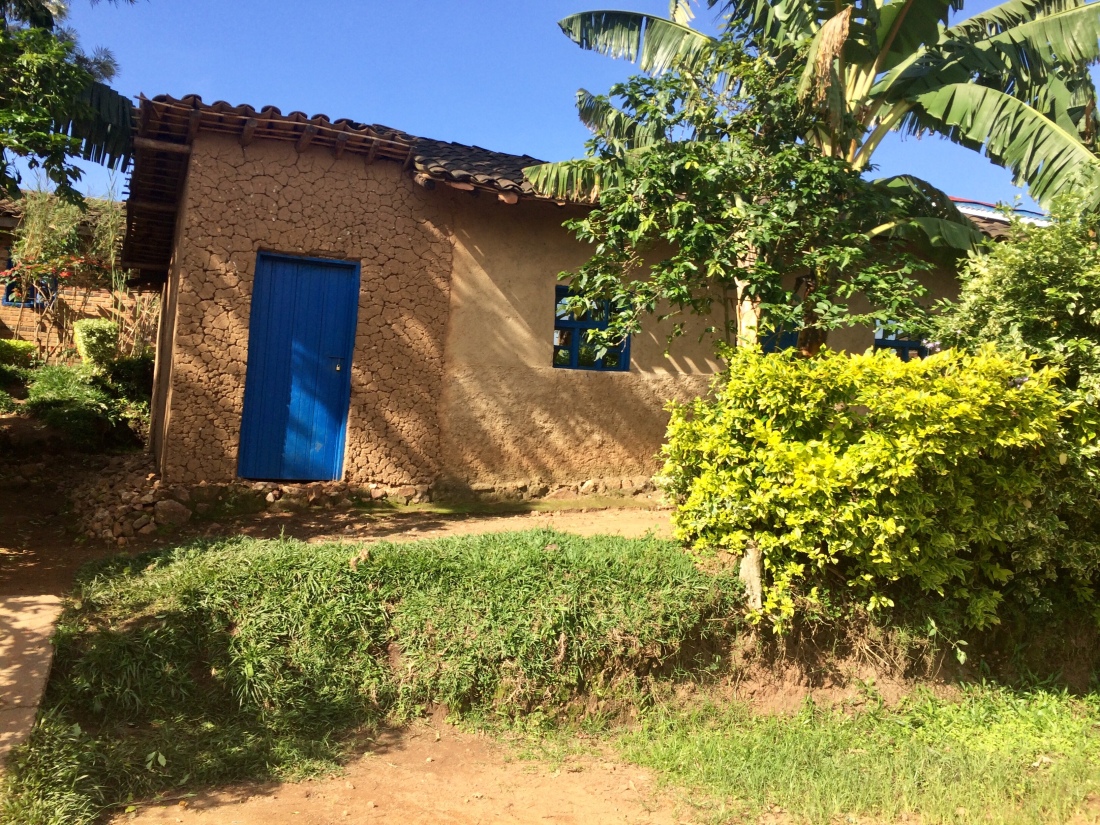
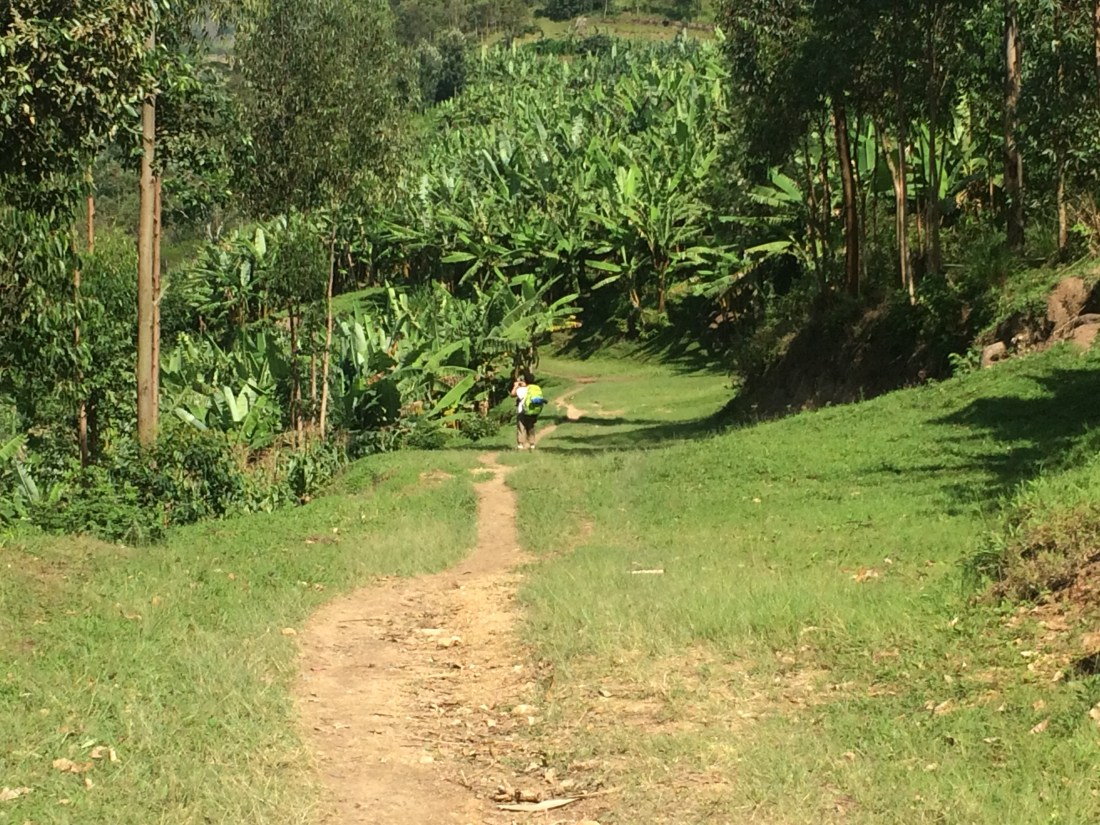
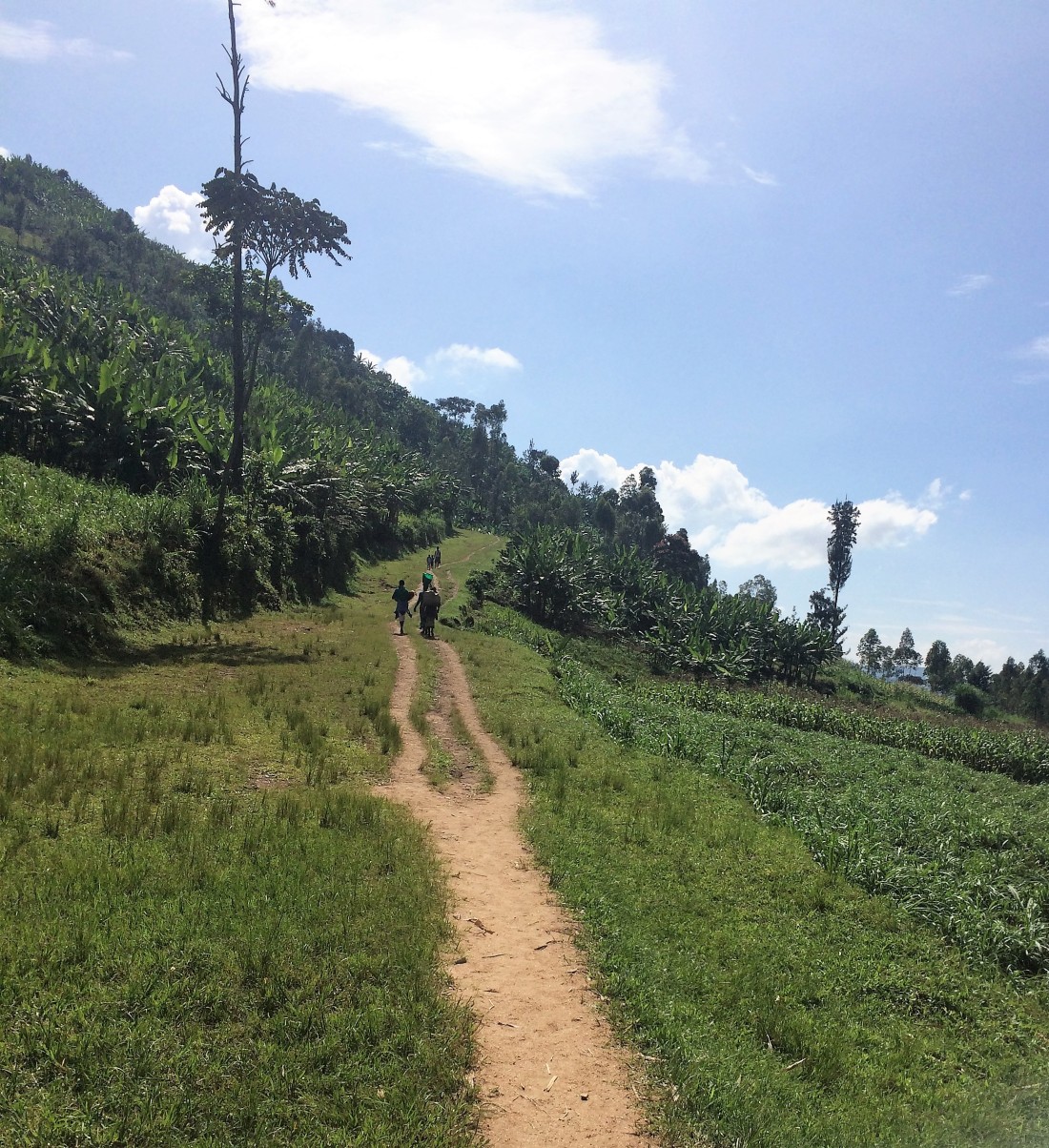
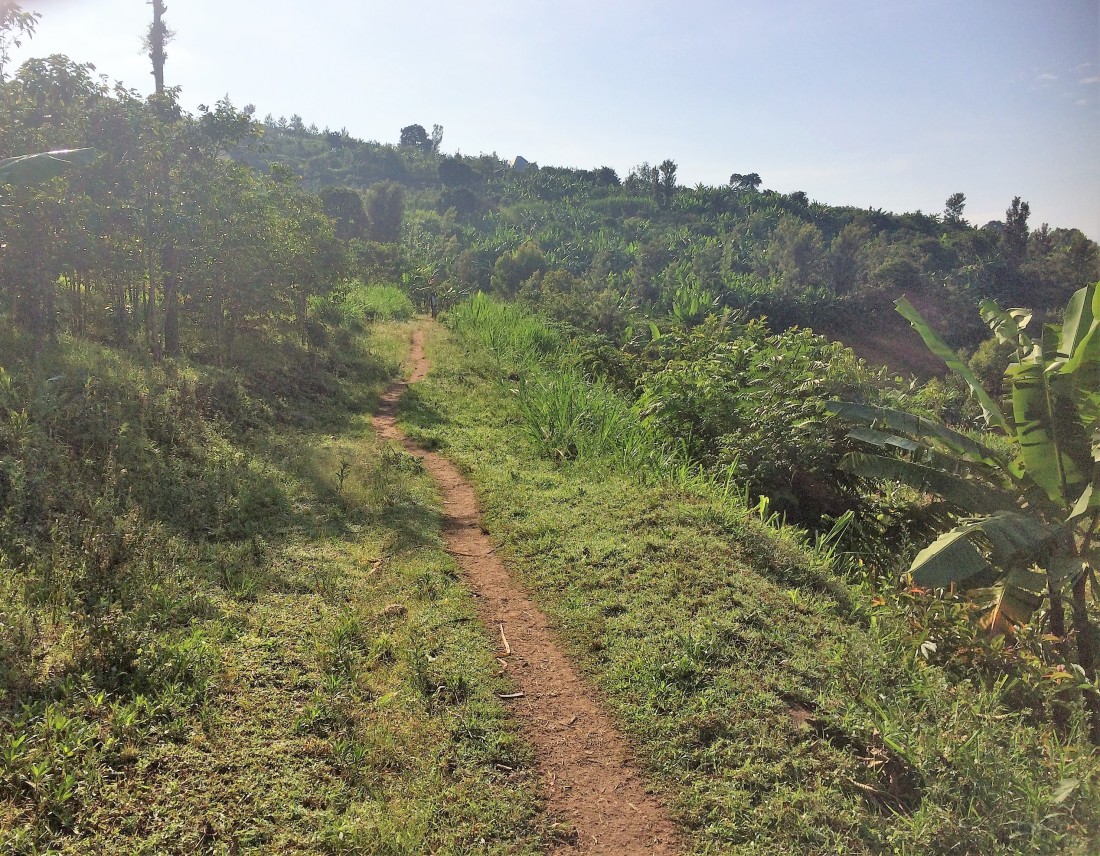 At one point, we came to a T-intersection with no signs telling us which way to turn. We were flummoxed; should we go right or left? Of course, a throng of kids descended on us as soon as we stopped, so we asked them which way to Musasa, and they had no idea. So, after scratching our heads for a few moments, we decided to go right, which turned out to be wrong. After walking a short distance, we met a group of adults and asked in Kinyarwanda where Musasa was. A woman pointed the other way, so we turned around and retraced our steps. Not long after, a young man joined us and wanted to be our guide. However, by this time, we were fairly certain that we could just follow the single-track trail. Finally, after a lot of ups and downs, we saw a Congo-Nile Trail sign and joined the official trail. Because we took the shortcut (which I don’t think was any shorter or easier than the official trail), we bypassed the actual town of Kinunu, which is at the top of another mountain.
At one point, we came to a T-intersection with no signs telling us which way to turn. We were flummoxed; should we go right or left? Of course, a throng of kids descended on us as soon as we stopped, so we asked them which way to Musasa, and they had no idea. So, after scratching our heads for a few moments, we decided to go right, which turned out to be wrong. After walking a short distance, we met a group of adults and asked in Kinyarwanda where Musasa was. A woman pointed the other way, so we turned around and retraced our steps. Not long after, a young man joined us and wanted to be our guide. However, by this time, we were fairly certain that we could just follow the single-track trail. Finally, after a lot of ups and downs, we saw a Congo-Nile Trail sign and joined the official trail. Because we took the shortcut (which I don’t think was any shorter or easier than the official trail), we bypassed the actual town of Kinunu, which is at the top of another mountain.
The views all day were spectacular. We stopped at the village at the junction of the Congo-Nile Trail to buy water. Today was super hot with almost no shade. And, the many hills made us sweat even more.
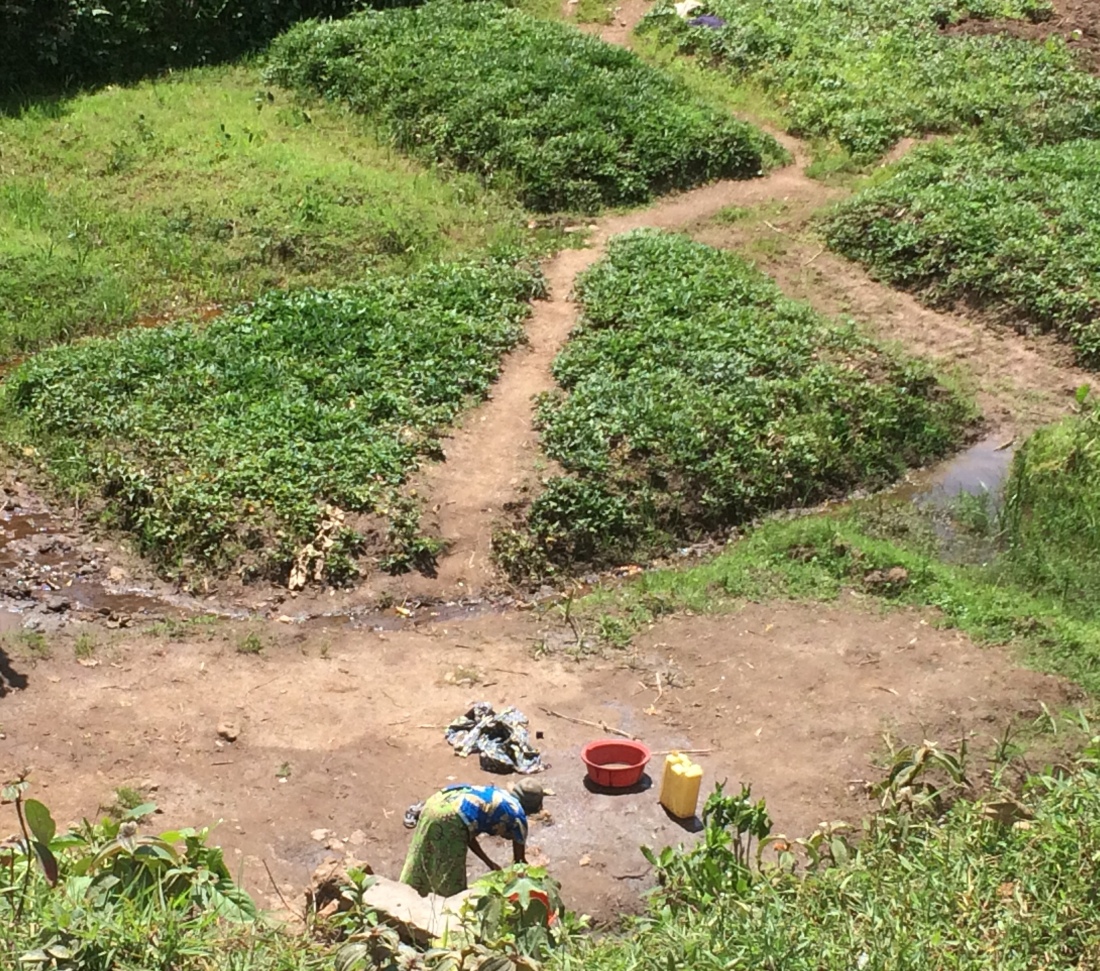
In the afternoon, we had hiked a very long time without finding a place to buy water. The last place we had bought water was in the morning. We entered a village and strangely saw no place to purchase water. So, we asked a villager, who led us to a dark and tiny store. We asked for four bottles, but the shopkeeper had only two. We sat down on two wooden stools that he kindly brought out for us. Then, someone entered the store, bringing us two more bottles of water, all for 300 francs each.
On our first day, we had seen sheep, but not today. Instead, we saw turkeys, cows, chickens, goats and black pigs on this portion of the Trail.
We discovered that goats love banana peels and so, for the rest of the hike, we saved our banana peels to give to the goats.
Before arriving in Musasa, we got to a sign for Musasa Base Camp. Bene walked further down the road in search of the base camp but found only a coffee plantation.
Much later, our hosts at the Musasa Guesthouse informed us that there is no base camp, that nothing is there anymore. Yet, the sign remains, continuing to lure and confuse hikers. It would be easy for the Rwanda Development Board to remove the sign, but they have not.
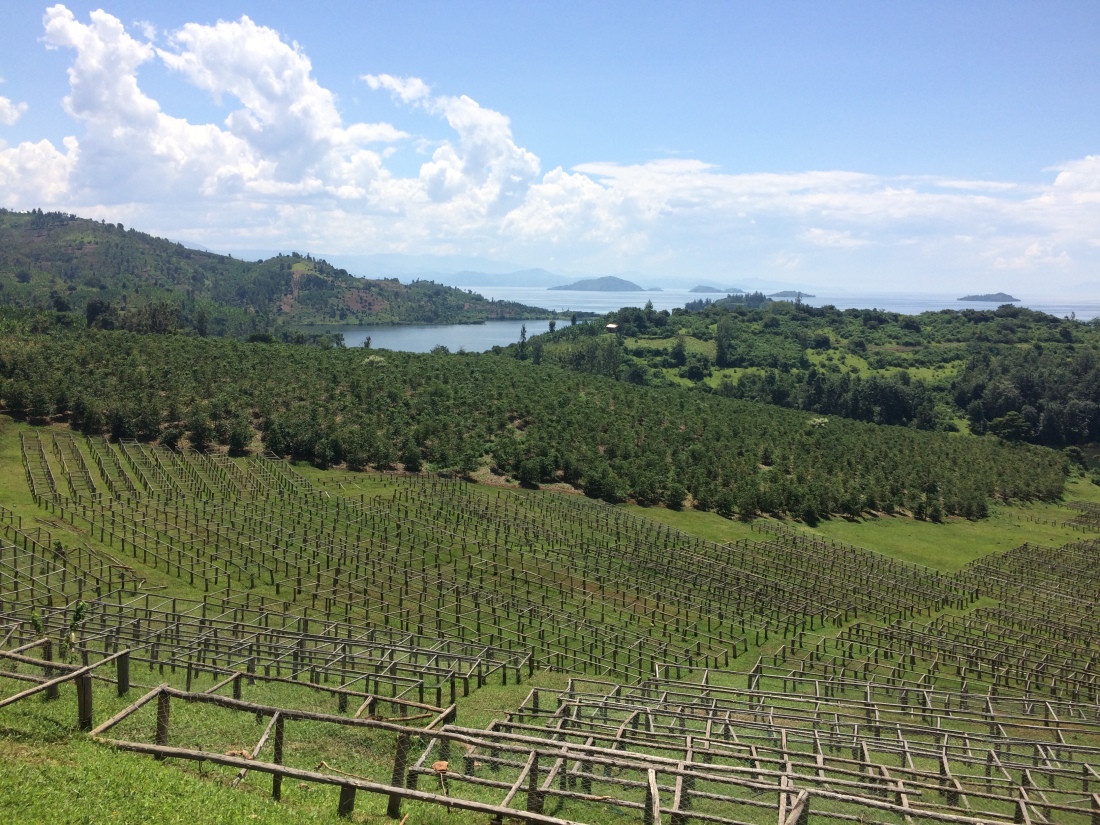
Thus, we returned to the main trail and continued to the town of Musasa, actually to the beginning of the town because it extends for miles sporadically around. At a small store where we stopped to rest and drink water, I asked if the Musasa Guesthouse was near, and everyone in the shop assured me that it was. In fact, it was least two miles further up three grueling hills in relentless equatorial sun and no shade.  By this time, my forearms were quite sunburned. (I had not thought to pack sunscreen despite living in Rwanda which is located just south of the equator, and I suffered for it.) Although I wore a long-sleeved shirt, my wrists and some of my forearms were exposed from being horizontal due to my using hiking poles. Fortunately, I had packed a baseball style cap to protect my face and wore long hiking pants, as shorts are not generally approved of in Rwanda. Climbing each hill and drained by the unsparing sun, I asked people I met if the guesthouse was ahead, and all assured me that it was by pointing in the direction we were going and replying, “Yego,” which means yes.
By this time, my forearms were quite sunburned. (I had not thought to pack sunscreen despite living in Rwanda which is located just south of the equator, and I suffered for it.) Although I wore a long-sleeved shirt, my wrists and some of my forearms were exposed from being horizontal due to my using hiking poles. Fortunately, I had packed a baseball style cap to protect my face and wore long hiking pants, as shorts are not generally approved of in Rwanda. Climbing each hill and drained by the unsparing sun, I asked people I met if the guesthouse was ahead, and all assured me that it was by pointing in the direction we were going and replying, “Yego,” which means yes.
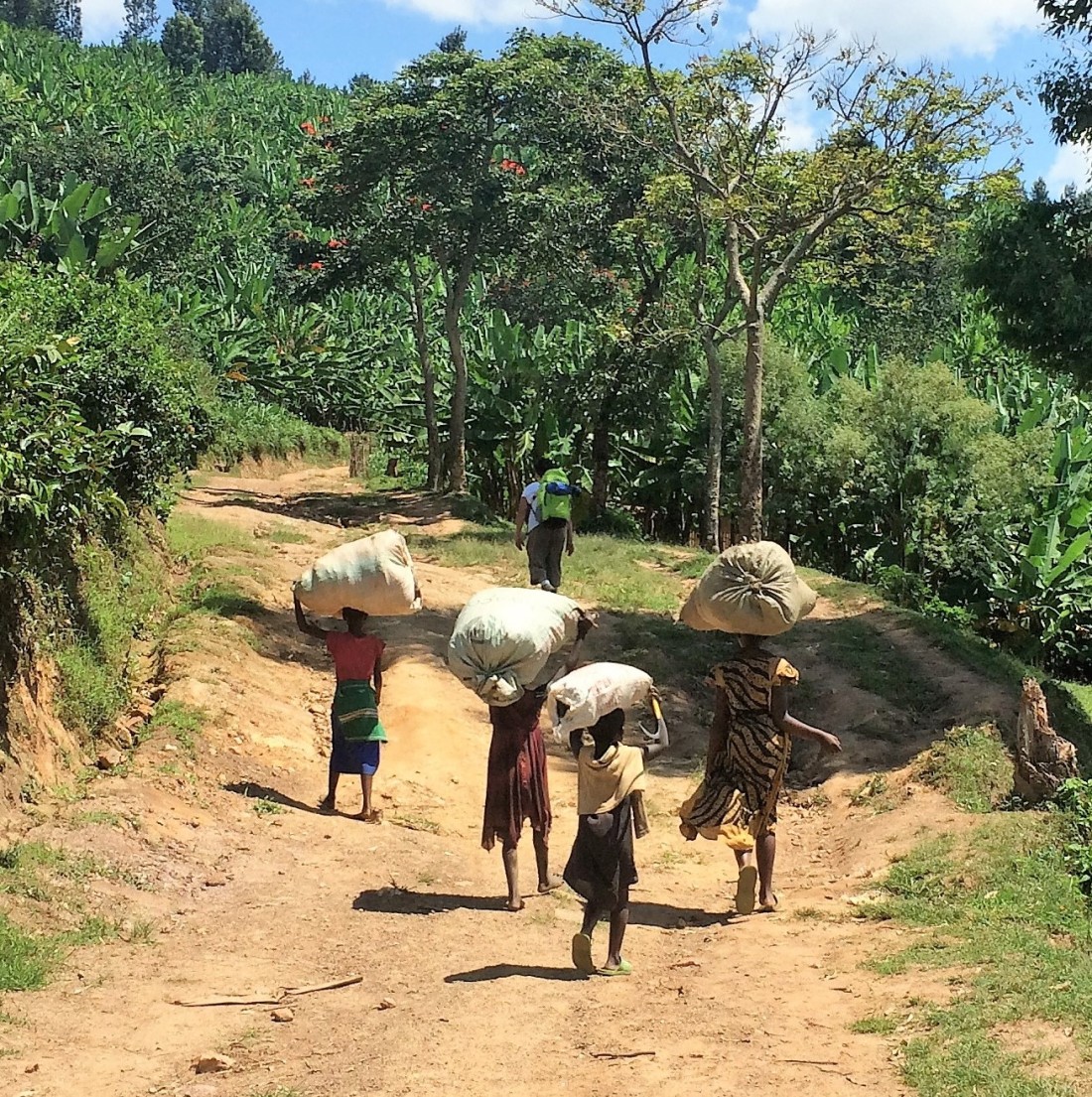
Finally, after the third agonizing hill, we came to another small village, also part of Musasa. First, we saw a fairly large Genocide Memorial on our right. (Later, after resting and rehydrating, as I walked through the village accompanied by a friendly villager, I was advised that no photos of the memorial were permitted, and I respected that.) Then, we saw a mosque on our left. Across from the mosque,  on the right side of the road is the Musasa Homestay. It has very obvious signage. We were so happy, though sweaty and exhausted, to have finally arrived at our day’s destination.
on the right side of the road is the Musasa Homestay. It has very obvious signage. We were so happy, though sweaty and exhausted, to have finally arrived at our day’s destination.
I walked through the front door and collapsed on a chair at the table and called, “Muraho,” the greeting for someone you haven’t met before or someone you haven’t seen in a long time. Instantly, Scovia appeared. Scovia is a most warm and lovely young woman, who is from Uganda. Although her English is basic, her engaging smile and eagerness to help more than makes up for it. Later, we met the other worker at the homestay, Modisha John, also Ugandan and equally friendly and eager to be of service.
Before embarking on the Congo Nile Trail, I had read blogs by previous hikers, one of whom gushed about how wonderful the Musasa Homestay and its hosts were. She liked it so much that she stayed two nights. I was skeptical that it could be so pleasant, but indeed it was – all thanks to our two delightful hosts. Béné and I, too, loved this place. In fact, it was easily our favorite of all the places we stayed while on the Trail.
The homestay has three guest rooms, all at 10,000 francs (less than $12) per person, including a bountiful breakfast. There are two small single rooms and a larger room with a double bunk bed. Though small, the rooms are neat, clean and perfectly adequate, with bed nets to keep away mosquitoes. 
 We were each given a towel. We paid our 10,000 francs and ordered dinner from a menu. We also ordered our next morning’s breakfast. The Musasa Homestay has a fridge stocked with cold fantas and beer (Primus, Primus Citron, Heineken and Turbo King), as well as water. The biggest surprise was a box of red wine on a kitchen shelf!
We were each given a towel. We paid our 10,000 francs and ordered dinner from a menu. We also ordered our next morning’s breakfast. The Musasa Homestay has a fridge stocked with cold fantas and beer (Primus, Primus Citron, Heineken and Turbo King), as well as water. The biggest surprise was a box of red wine on a kitchen shelf!
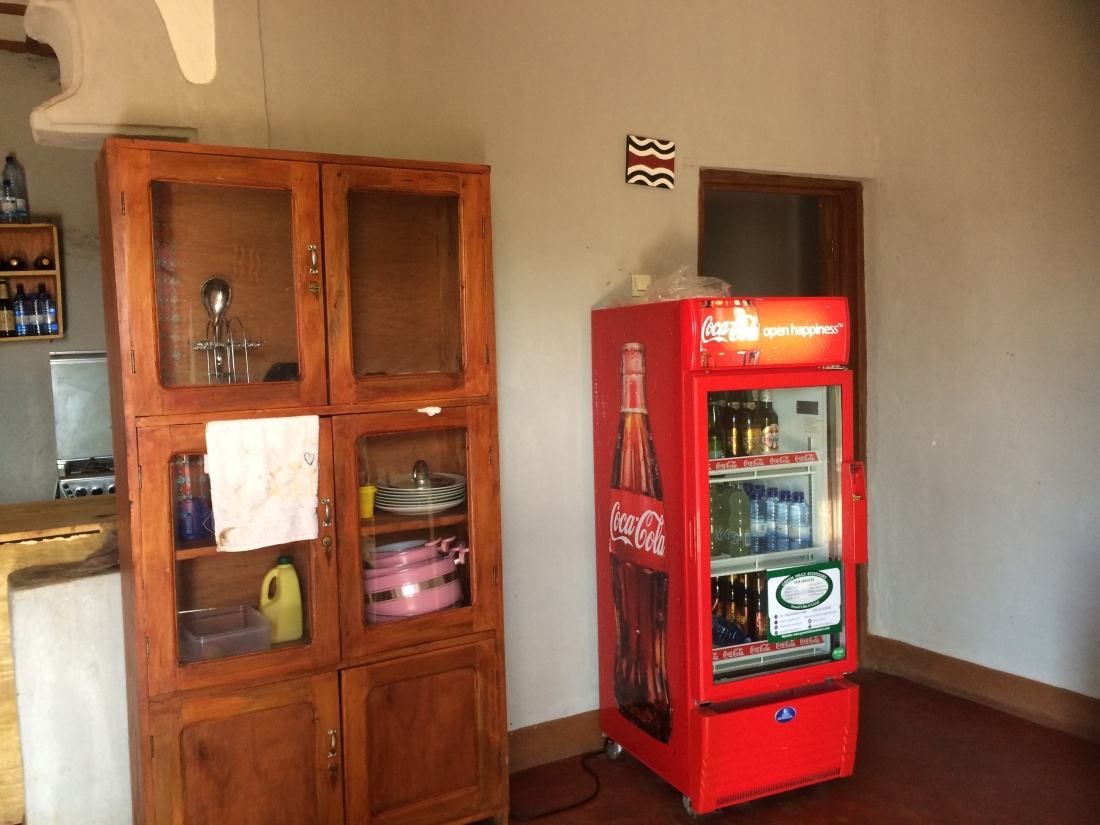
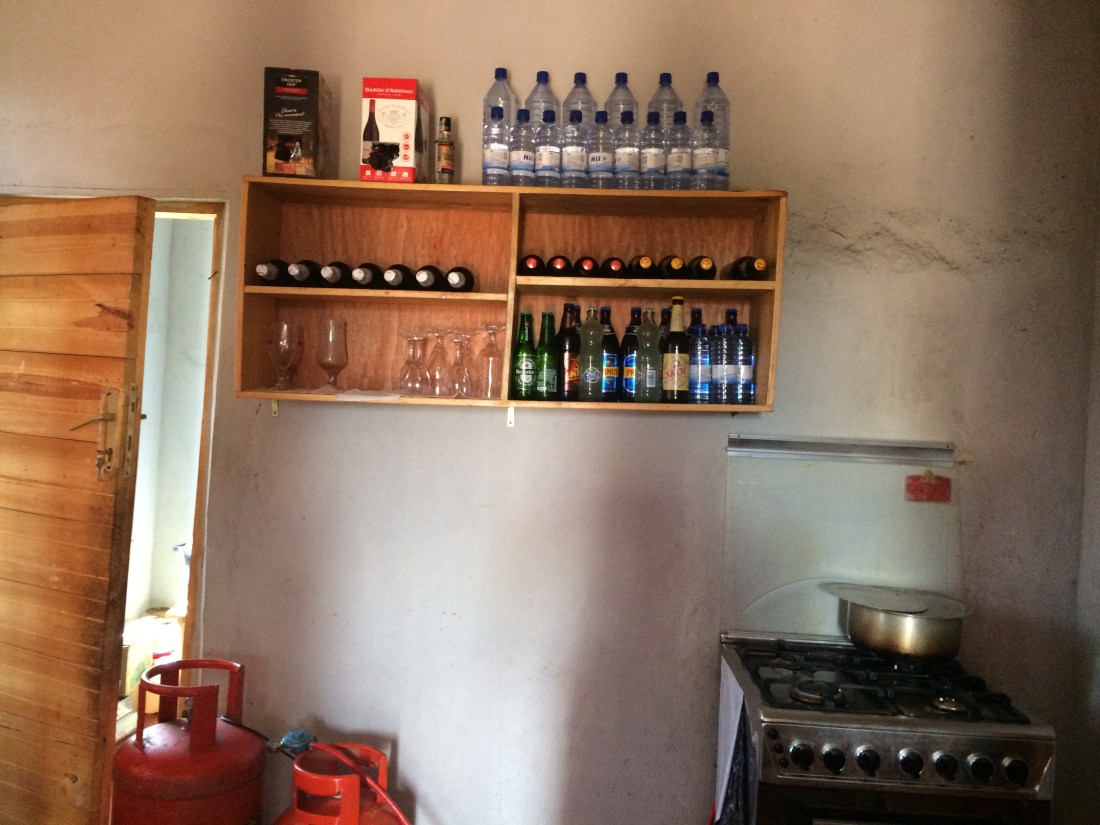
The large entrance room has a large wooden table adorned with bright place mats. We would eat our meals here.
 There is a sign near the door stating that the homestay is owned by Green Hills Ecotours, the tour company in Gisenyi (Rubavu) that we never found open. So, it’s not really a homestay, i.e., staying in a family’s home. Rather, the hosts are paid to live at the homestay, but perhaps that made it better.
There is a sign near the door stating that the homestay is owned by Green Hills Ecotours, the tour company in Gisenyi (Rubavu) that we never found open. So, it’s not really a homestay, i.e., staying in a family’s home. Rather, the hosts are paid to live at the homestay, but perhaps that made it better.
The homestay’s toilet in the rear of the compound is a pit latrine.
Everything is clean. The toilet is stocked with toilet paper and there is a hand washing station outside. In the same area, there is a bathroom where we took our bucket baths. John and Scovia will do hikers’ laundry if they want.
But Béné and I did our own laundry and hung it on the lines in the private courtyard in the back of the house.
Here is Bene hanging laundry in the courtyard.
Dinner was delicious and filling: fish brochettes and a fresh salad of cucumbers, tomatoes and onions (a popular Rwandan specialty), as well as French fries.  And, of course, Béné and I celebrated with a glass of the boxed red wine.
And, of course, Béné and I celebrated with a glass of the boxed red wine.
This was the only place we stayed that did not provide a pair of flip-flops under the bed, a Rwandan guesthouse tradition. But, that was no problem for us as we had packed our flip-flops. That night, we slept peacefully in the comfy beds. At around 3 a.m., I awoke to a gentle rain, but fell immediately back to sleep. When I awoke in the morning, the rain had stopped and the air was fresh.
Our breakfast, not surprisingly, was substantial and delicious – a perfect hiker’s breakfast. Béné opted for the French toast, and I had the crepes. Both were accompanied by a plateful of bananas, passion fruit, oranges and pineapple. And, of course, there was coffee.
After breakfast, we sadly said our goodbyes to Scovia and John who could not have been friendlier or nicer. 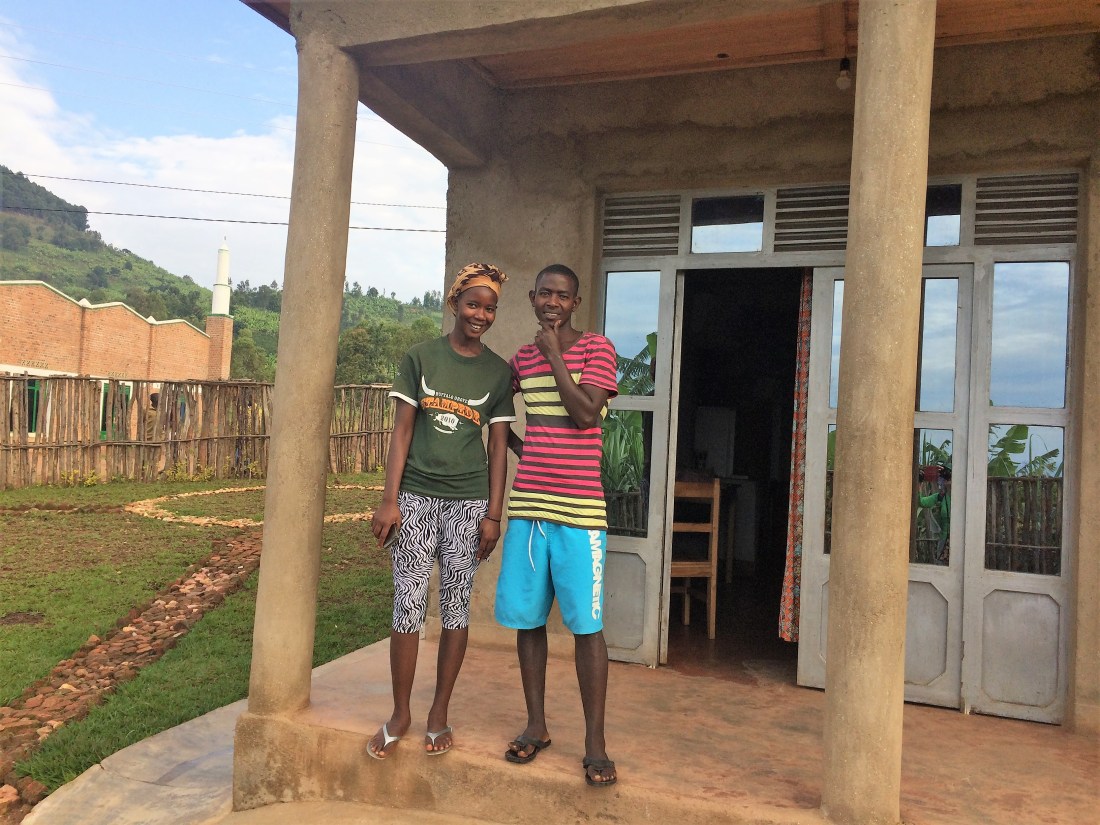
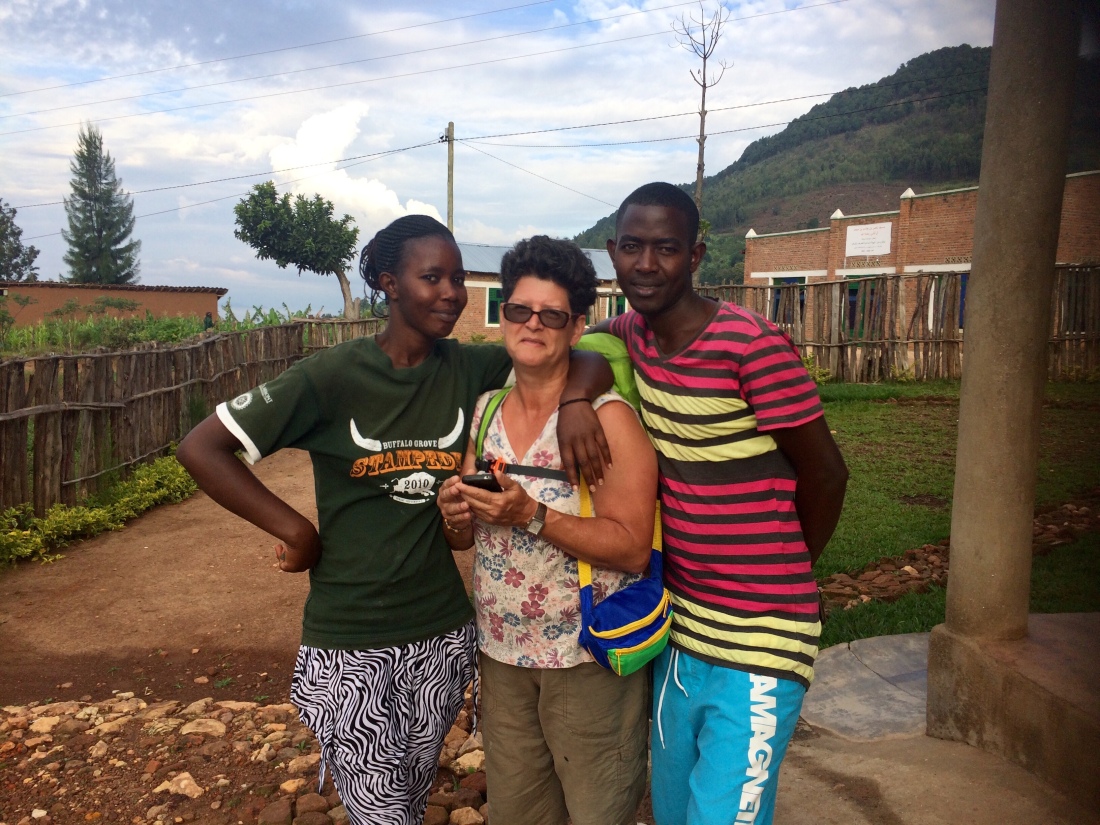
Musasa was the highlight of all the places we visited along the Trail, due to our wonderful hosts at the Homestay, the fabulous food they prepared for us and the friendly and curious townspeople. We were sad to leave.




















